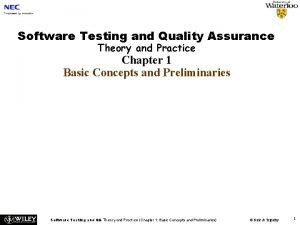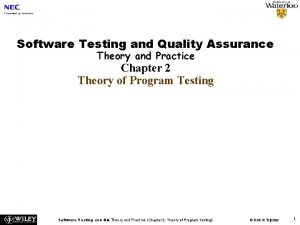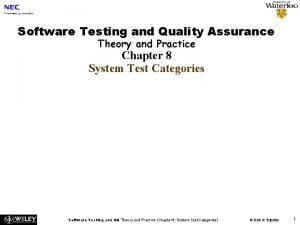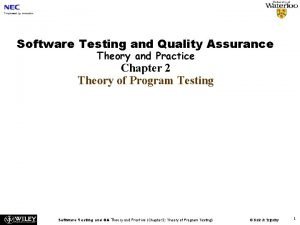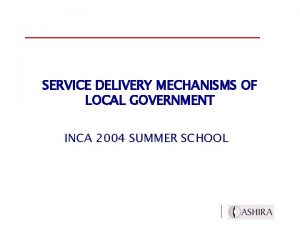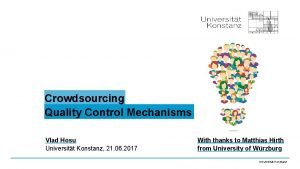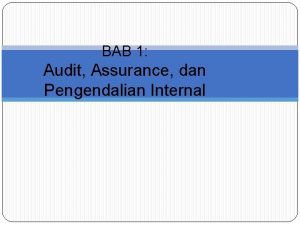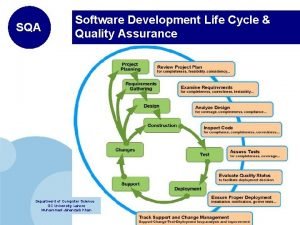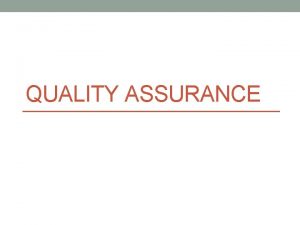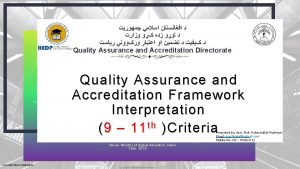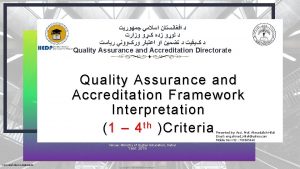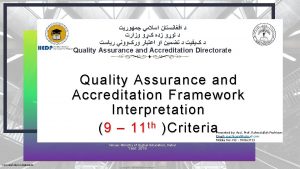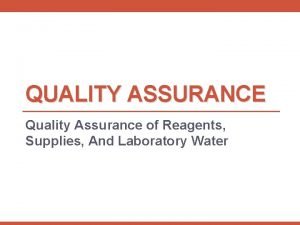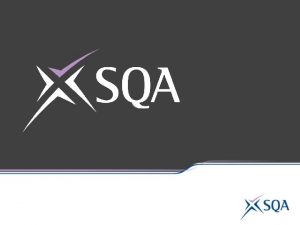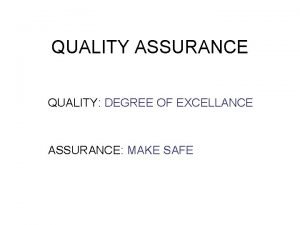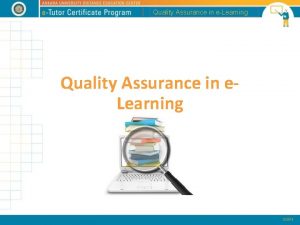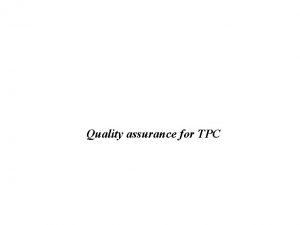INTERNAL QUALITY ASSURANCE IQA MECHANISMS AWARENESS AND INVOLVEMENT






















- Slides: 22

INTERNAL QUALITY ASSURANCE (IQA) MECHANISMS AWARENESS AND INVOLVEMENT OF STAFF AND STUDENTS: A CASE STUDY OF MARIST INTERNATIONAL UNIVERSITY COLLEGE (MIUC) Okello Jacklyne Alari (Sr. ) Registrar, MIUC

INTRODUCTION UNESCO (2012) points out that education is a corner stone of social and economic development: it is supposed to generate skilled manpower to increase the scientific and technological development. However, education cannot play this role unless it is of the highest possible quality.

In Kenya the Commission for Higher Education (CUE) has carried out a number of audits in all universities and their constituent colleges in the recent past. Because of this some universities have mastered the art of ‘drama’ in order to present to the CUE what they are looking for during the audit.

Once audit notices are received most universities find themselves running up and down to put things together in readiness for the audit. Thus, some staff are made to work overnight, to ensure that their institution gives the best shot.

Besides, some university officials keep making inquiries with questions such as; o What did they ask? o How can I get that? o Were they tough? o How long were their sessions? o Were you safe on that?

Research Problem The much hyped Internal Quality Assurance (IQA) systems could be a fallacy and superficial in universities This generated my interest for this simple study and prompted queries such as: o Are there IQA mechanisms in universities? o Are the staff and students aware of IQA? o What are some of the quality aspects according to students and staff understanding?

LITERATURE REVIEW Lomas (2002) asserted that QA in higher education guarantees the improvement of standards and meets quality needs of students, employers, financiers and other stakeholder. Waweru (2007), quipped that the very success of an institution or its failure is depended on the human effort. Without people, material and financial resources are worthless (D’Souza, 1990)

Thus this paper explores the awareness and involvement of the staff and students in IQA with special focus of MIUC. As an institution seeks quality it is important that staff members and students know what is involved.

METHODOLOGY Study Area MIUC has had QA policy and active Quality Assurance Committee (QAC). MIUC has been audited several times by CUE

MIUC, like any other functional university has continuously conducted: o collected analyzed data on students’ enrolment rates; Students’ progress; Pass rates; Drop-out rates; Graduation rates. o Student evaluation of staff and Course o Review of Academic Programs o Periodic evaluations of the activities o Conducting surveys of the labour market experiences of MIUC graduates… etc

Scope of Study The study’s primary concern is awareness and involvement of staff members and students in IQA mechanisms at MIUC 99 staff and 472 students. Research Instrument and Design The researcher carried out a survey. Random selection of research subjects, getting their views and generalizing the findings to the entire population.

RESULTS & DISCUSSION Demographic Information Of the staff who participated in the study 53. 2% were teaching staff and 47. 8% were non teaching staff. It was observed that the representation was distributive. Of the students 15. 0% first years, 31. 7% second years, 25. 0% third years and 28. 3% were fourth years.

Staff Category

Students Levels of Study

IQA Awareness That 68. 1% staff members were aware of the IQA mechanisms available at MIUC while 29. 8% were not aware, 2. 1% did not answer the question. It was further revealed in the qualitative finding that some staff did not completely understand what IQA mechanisms meant. It may be assumed that these were some non teaching staff.

On the other hand 46. 7% of the students were aware while most of them 51. 7% were not aware of the IQA mechanisms available at MIUC This was a cause for worry because it implied that most students didn’t know when they were being given a raw deal

Students Staff Members Frequency % Yes 32 68. 1 28 46. 7 No 14 29. 8 31 51. 7 1 2. 1 1 1. 6 46 100. 0 60 100. 0 Missing Value Total

IQA Mechanisms The findings revealed that students and staff members know a very small percentage of the MIUC IQA mechanisms. This is because the mentioned areas only cover three aspects in the MIUC QA policy. o Student evaluation of staff o course unit evaluation o review of academic programmes

Student and Staff Involvement 40% of students indicated that they were involved in filling lecturers’ evaluation forms. This was relatively low level of involvement 53. 2% of the academic staff indicated that they were involved in the moderation of semester examinations and results, monitoring student lecture attendance by ensuring that they sign in during lectures, mentoring students.

CONCLUSION & RECOMMENDATIONS Conclusion The level of awareness of IQA is generally low in the university; lower among students than among staff The involvement of students and staff members in ensuring quality at MIUC is generally low because of their awareness There are still a lot of gaps in awareness and involvement quality issues in Universities at all levels

Recommendations There is need for more awareness in higher education institutions The awareness and involvement sensitization should engage both staff and students Consider developing a curriculum on quality assurance to be taught in universities. Quality should be an agenda of every meeting in institutions.

THANK YOU
 West asian israel arabia musical instruments
West asian israel arabia musical instruments Quality assurance vs quality control
Quality assurance vs quality control Concepts of quality
Concepts of quality Pmp quality management
Pmp quality management What are quality standards in project management
What are quality standards in project management Quality assurance model in nursing management
Quality assurance model in nursing management Compliance vs quality
Compliance vs quality Cvs privacy awareness and hipaa training answers
Cvs privacy awareness and hipaa training answers Quality assurance theory
Quality assurance theory Software testing and quality assurance: theory and practice
Software testing and quality assurance: theory and practice Theory of goodenough and gerhart
Theory of goodenough and gerhart Software testing and quality assurance theory and practice
Software testing and quality assurance theory and practice Software testing and quality assurance theory and practice
Software testing and quality assurance theory and practice Internal service delivery mechanism
Internal service delivery mechanism Sqa tools and techniques
Sqa tools and techniques European standards and guidelines for quality assurance
European standards and guidelines for quality assurance Project scheduling and tracking software quality assurance
Project scheduling and tracking software quality assurance Internal governance mechanisms
Internal governance mechanisms Quality control mechanisms
Quality control mechanisms Audit assurance dan pengendalian internal
Audit assurance dan pengendalian internal Internal auditing assurance & advisory services
Internal auditing assurance & advisory services Internal audit assurance engagement
Internal audit assurance engagement Sdlc quality assurance
Sdlc quality assurance









